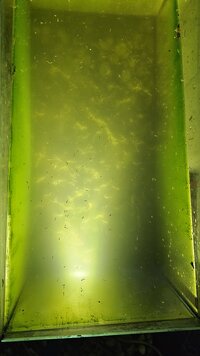Jorge O'Reilly
Member
Howdy
So I've just spent a couple minutes outside with a gauze bag, a fine net and a couple jars, and I've returned with an inordinate number of copepods and copepod-sized buggers in a two-liter jar. I'm at my parent's house, while my tank is at my flat downtown, I'm not going to be able to go there for a couple days. Which begs the question: how do I keep these alive? I know they filter-feed, but do they live off algae, period, or can I do something else? For instance, some yeast? Some wheat or corn flour? I want to have a suitable number so that I can give the tank a bit of a clean and replace hard-won microcrustacean population as it goes down the drain. Literally and figuratively.
So I've just spent a couple minutes outside with a gauze bag, a fine net and a couple jars, and I've returned with an inordinate number of copepods and copepod-sized buggers in a two-liter jar. I'm at my parent's house, while my tank is at my flat downtown, I'm not going to be able to go there for a couple days. Which begs the question: how do I keep these alive? I know they filter-feed, but do they live off algae, period, or can I do something else? For instance, some yeast? Some wheat or corn flour? I want to have a suitable number so that I can give the tank a bit of a clean and replace hard-won microcrustacean population as it goes down the drain. Literally and figuratively.



